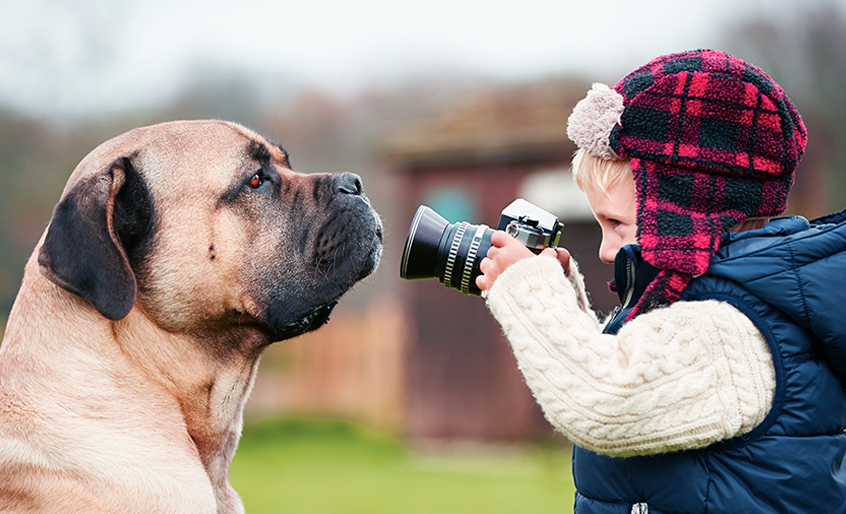Having great written content on your veterinary blog is a key part of your online presence—but it’s important to see the big picture, too. Are you giving the proper consideration to images?
Images help your website in a number of ways. They’re a great way to break up content for your website’s visitors, making posts easier to read and more engaging. They can also be an opportunity to help your rankings in search engine results.
Here are some tips to ensure you’re adding images that help your visitors and provide search value to your website.
Add Pictures to all of Your Posts
Typically, when reading articles and pages online, people will skim the content for interesting details, rather than read it deeply. Large blocks of text look daunting and often aren’t read at all. Breaking up larger posts with images, subheadings, pull quotes, and bullet points can help make your content “skimmable,” meaning it’s more appealing for readers.
In addition to the benefits to your user experience and content consumption, adding images can also be good for your search engine rankings. Optimizing your images with related keywords lets you showcase your content’s relevance to search engines.
Use Your Own Images
In the animal health industry in particular, there are really only so many quality stock photos out there. You see the same images used on all kinds of things: product packages, brochures, websites, billboards, the list goes on. They’re tired, they are no longer interesting, and they’re not original content.
Whenever possible, use your own original images. Post pictures of your patients, and your staff (but make sure you have permission first!), and avoid photos of pets from Google Images, or the obviously-a-model stock photo veterinarian.
Adding your own images helps your content appear original, fresh, more engaging, and trustworthy. A potential client seeing your own faces is a good thing; that same client recognizing the stock photo models as the staff from the clinic in the next town over isn’t a good thing.
Add Alt Text and Title Tags
The thing about images is that not everybody can see them—and this is where alternative (alt) text and title tags come in handy.
The alt text is what a human reader will see if the image itself isn’t visible. For example, let’s say a user has a visual impairment and is using a screen reader. The reader will use the alt text to narrate what the image would be.
It’s also useful if the image is broken, or if users have chosen not to load images in their web browsers.
Alt text also provides context for search engine crawlers, which can’t actually see images. It’s important to write alt text that accurately describes the image, and that tries to incorporate the keyword you wish to target with your page.
Most web browsers use image title tags as the text that appears beside your cursor when you hover over an image. This is known as a tooltip. Some older browsers use the image alt-tag for this purpose.
Match Your File Names and Your Content Title
Believe it or not, your image’s file name plays an important role in how a search engine interprets your photo, as well as how it ranks in Google’s image search. Make sure that you name your file something that describes the image content before uploading.
For example, instead of going with “IMG200007.jpg,” you could try “dog-getting-dental-cleaning.jpg” to help your images rank better. If the image is your own (i.e., one you took in your practice), you can also include the practice name or an abbreviation into the image name.
Size Your Images Properly
One of the most common mistakes when it comes to images is not resizing them properly before adding them to posts. Most images taken by phones and digital cameras are a much higher resolution than is required for use on a website.
If you don’t resize the image using image editing software before adding them to your website, you’re relying on your website’s content editor to do the work. It will resize the images for you, but it may load the entire full-size image in the background. This causes your page to load more slowly than it should, which is both frustrating to a visitor and potentially damaging for search engine results.
You don’t need to have a heavy-duty image editor like Photoshop to resize images. For example, Windows comes with the Photos app. To resize an image, open it in Photos, click “Edit” in the toolbar and then “Resize.” For Mac users, the Preview app will do the trick. Open the image, click “Tools” in the toolbar and “Adjust Size.”
Save your photo as a JPEG file, and choose a quality setting in the medium- to high-quality range. This will give you a quality image with a more reasonably sized file. Avoid using the highest-quality setting (the image won’t be compressed for good web viewing) and the lowest-quality setting (image quality will suffer).These are the basics of images to get you started. With just a few quick tips, you’ll be seeing the big picture of multi-functional images on your website in no time—and helping pet owners see it, too!






